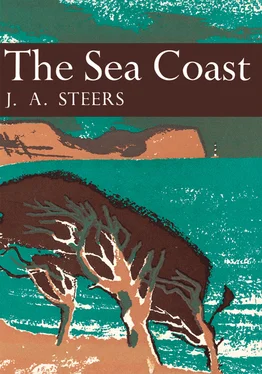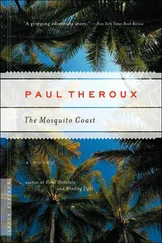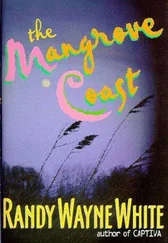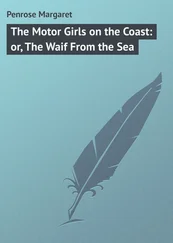It is easy to investigate this type of movement on the beach. Little, however, is known of what happens at a rather lower level. In June, 1948, an attempt was made to explore this problem along the Chesil Beach. A diver either walking in from the beach or let down from a boat and walking toward the zone of breaking waves was able to notice the effect of the waves on the stones which are completely submerged. Unfortunately, in rough weather the observations are impossible and in this first attempt we had to be content with generalities and noticing how to overcome difficulties if the experiment can be repeated. Enough, however, was seen to make it clear that under the waves in which the diver could operate with safety, there was a to-and-fro motion of pebbles. When the waves were approaching rather more obliquely there was some lateral translation of the stones. There seemed little doubt that waves can and do move pebbles below water level even in fairly calm weather. In rough weather it is probable that the waves can lift the pebbles off the bottom, 2 if they are not too big, and that (see below) they may be carried laterally while “afloat” in the tidal current. However, much yet remains to be verified.
The motion and effect of wind waves die out rapidly downwards. In a wave the movement of the particles of water is as shown in Figure 3, and the downward loss of power is rapid. 1 On the bottom there may be only a to-and-fro motion. A rough but useful test of what happens on a sandy foreshore can easily be made when bathing. If you stand in water about four or five feet deep when ordinary calm weather waves are running, you will find that as the wave passes you, you are lifted up a little. At the same time (Fig. 3) you are “bent” shorewards when the crest passes, and in the opposite. direction during the passage of the trough. The general effect is visible when a wind is blowing over a field of corn in ear. The whole field appears as if it were waving, but any individual stalk and ear is not displaced in the sense of being torn out of the ground, but the ear of wheat undergoes a motion something like the water particles in a wave. A similar kind of motion applies to you if you stand firm when you are bathing. At the same time you may notice that the lighter sand is stirred up around your feet.
TABLE I
SCOOT HEAD ISLAND

If you allow yourself to float, and let the water take you as it will, you may be carried along, slowly, but roughly parallel with the beach.
FIG. 3 Wave motion
It is the tidal current which is doing this, and these currents vary in direction with the state of the tide. At any given locality they can be investigated, but on an open beach it may happen that with a rising tide the movement is, say, eastward, whereas on a falling tide it is in the opposite direction. If you continue your observations while bathing, and if you peer down a little under the water, you will note that the sand is disturbed by the waves about your feet, and that individual grains so stirred up may be carried a short distance one way or the other by the tidal current. The disturbed particles soon fall to the bottom, but the next wave may stir them up again, and another lateral jump takes place. In rough weather this action takes place on a much greater scale. The particles “jump” sideways, or if you like, move laterally in a saltatory manner. If the tidal current is moving fast, it may carry material with it just as a river does. In both of these ways—beach-drifting and tidal currents—vast amounts of sand and silt are carried. It will be appreciated that current action, which can go on at all states of the tide, is quite distinct from the beach-drifting that takes place on the beach itself. What is more, since tidal currents along a stretch of coast may flow in opposite directions at different times, the balance of movement may be quite small. Often, however, the flood current, i.e. the current associated with a rising tide, is the more powerful.
To current action of this sort, impossible effects are occasionally ascribed. A current which can move an individual pebble in a smooth trough is by no means necessarily capable of moving the same pebble over a sand surface, and still less of moving it from a group of similar stones. The mass of pebbles in a sense behaves as one large one. Hence, a five or six knot current is not necessarily moving shingle over which it may be flowing. If, however, the shingle were put into motion in some other way, it might continue to move for some time. The method by which a current causes the movement of material on the sea floor can take place in one of two ways. Either, the current causes a direct thrust against any particle projecting above the general level, or, because of swirls and eddies a downward motion of the water is caused. It is for this reason that large stones lying on the bottom are often direct aids to erosion. It is therefore important to know the bottom speed of a current; it may be quite different from the surface speed, and the surface and bottom currents, even in shallow water, may run in opposite directions. Assuming that the direction of movement is the same at all depths in moderately deep water, the speed close to the bottom is about 85 per cent of the surface speed. On the other hand, anomalous factors may arise.
Owens found that where sand exists in quantity all currents up to 2·5 feet per second, or 1·7 miles per hour, are ineffectual in moving shingle, whereas at about 2·5 feet per second the current suddenly acquires the power of moving stones up to nearly 3 inches in diameter over a sandy bottom. Complications naturally occur if the bottom is not smooth, and in nature it seldom is. Owens’ conclusion, with which I fully concur as a result of my own observations, is that “… since the sea bottom is nearly always irregular, and stones are seldom perfect spheres, the effect of currents alone, unless of exceptional velocity, is chiefly limited to the transport of fine matter such as sand and mud.” 1
Before turning to various types of beach, two other factors in wave action need attention. It is perhaps too great a simplification to assert that, even for our present purpose, waves are of two sorts, but it is helpful to note the suggestion of Lewis, 2 who differentiated between constructive and destructive waves.
FIG. 4 Destructive (A) and Constructive (B) waves (After V. W. Lewis)
It has long been realised that some waves erode while others build up the beach. Lewis pointed out that in destructive waves the power of the backwash is large relative to the swash, which, in this type of wave, spreads up the beach rather lifelessly, even though the amount of water in it may be considerable. These waves have a marked orbital motion, and plunge down vertically or even curl seawards a little, into the backwash of the receding wave. Their energy is thus expended, and the swash is left with little power. Constructive waves break more regularly, and with a frequency of five to eight a minute. Since the breaker plunges less vertically, more energy is transmitted to the swash, which is swift and effective, even if the volume of water is less than in destructive waves. The backwash is weaker because the swash has spread over a bigger area, and has therefore lost more by percolation; also the greater amount of friction lessens the effect of the backwash. The length of constructive waves is greater than that of destructive waves. The nearly vertical plunge of a destructive wave is induced by the great mass of water brought to the beach by its predecessor, thus allowing the new wave to travel farther inshore, and plunge vertically on to a stretch of water without any extensive swash. These factors intensify the backwash. In a constructive wave, the orbital motion is more elliptical, and Lewis thinks that they break at an earlier stage in their orbit than do destructive waves (Fig. 4).
Читать дальше













